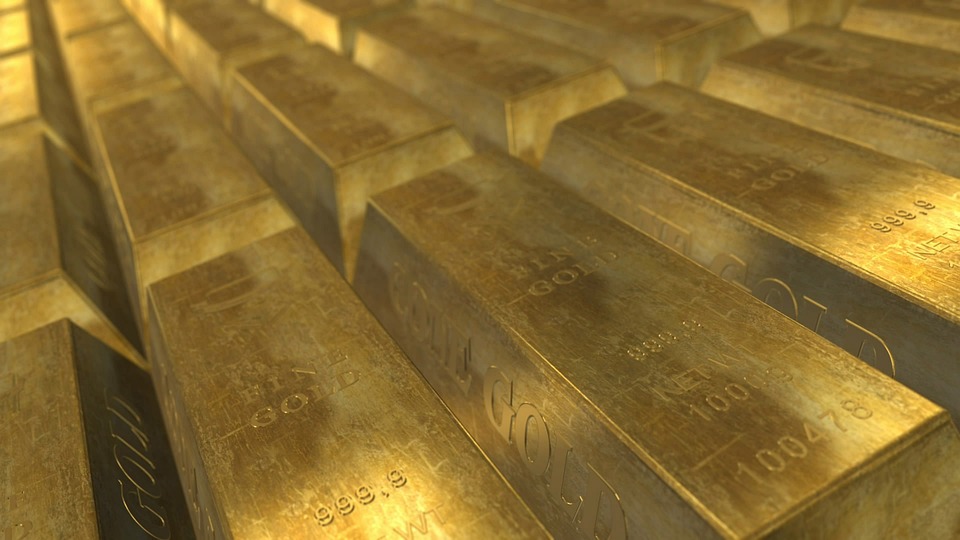Central Bank Gold Buying Continued Hot In July

Image Source: Pixabay
After returning to net gold buying in June, central banks continued to add to their gold reserves in July.
Globally, central banks reported net purchases of 55 tons in July, according to the latest data compiled by the World Gold Council.
In March, April, and May, central banks reported net gold sales, primarily due to Turkey selling 160 tons of gold over that three-month period. According to the World Gold Council, this was a specific response to local market dynamics and didn’t likely reflect a change in the Turkish central bank’s long-term gold strategy.
This was confirmed in June when the Central Bank of Turkey flipped back to buying, adding 11 tons of gold to its reserves. It continued increasing its reserves in July with a 17-ton gold purchase.
According to the World Gold Council, the Turkish government reinstated gold import quotas in early August. It remains to be seen whether this will lead to renewed central bank gold selling should local gold demand remain elevated.
The Turkish government recently raised the country’s inflation forecast to 65%.
The People’s Bank of China ranked as the largest buyer in July, adding 23 tons of gold to its holdings. It was the ninth consecutive month of buying for the Chinese central bank. China is the largest gold buyer year-to-date, having increased its official reserves by 188 tons. The People’s Bank of China now officially holds 2,136 tons of gold, making up 4% of its total reserves.
China has a history of adding to reserves and then going silent.
The People’s Bank of China accumulated 1,448 tons of gold between 2002 and 2019 and then reported nothing for more than two years before resuming reporting last fall.
Many speculate that the Chinese continued to add gold to its holdings off the books during those silent years.
In fact, there has always been speculation that China holds far more gold than it officially reveals. As Jim Rickards pointed out on Mises Daily back in 2015, many people speculate that China keeps several thousand tons of gold “off the books” in a separate entity called the State Administration for Foreign Exchange (SAFE).
Last year, there were large unreported increases in central bank gold holdings. Central banks that often fail to report purchases include China and Russia. Many analysts believe China is the mystery buyer stockpiling gold to minimize exposure to the dollar.
The National Bank of Poland (NBP) was also a big gold buyer in July, adding 22 tons of gold to its holdings. It was the fourth consecutive month of gold purchases for the Polish central bank, totaling 71 tons.
In the fall of 2021, Bank of Poland President Adam Glapiński said the central bank planned to add 100 tons of gold to its reserves in 2022. It’s unclear why the bank didn’t follow through, but it is now just 29 tons short of that stated goal.
When he announced the plan to expand its gold reserves, Glapiński said holding gold was a matter of financial security and stability.
Gold will retain its value even when someone cuts off the power to the global financial system, destroying traditional assets based on electronic accounting records. Of course, we do not assume that this will happen. But as the saying goes – forewarned is always insured. And the central bank is required to be prepared for even the most unfavorable circumstances. That is why we see a special place for gold in our foreign exchange management process.”
Three other central banks bought gold in July.
- Qatar – 3 tons
- Singapore – 2 tons
- The Czech Republic – 2 tons
Libya’s central bank reported a gold purchase of 30 tons in June after the data for that month had already been compiled.
Significantly, there are reports that Russia will recommence the buying of foreign currency and gold in the coming months, but there are few details about the plan.
Kazakhstan (4 tons) and Uzbekistan (11 tons) were the notable gold sellers in July. It is not uncommon for banks that buy from domestic production – such as Uzbekistan and Kazakhstan – to switch between buying and selling.
Even with Turkey’s big sales earlier this year, net central bank gold purchases totaled 387 tons through the first half of the year. That was the highest first-half total since the organization started compiling quarterly data in 2000. This continued the trend of increasing gold reserves we saw last year.
Total central bank gold buying in 2022 came in at 1,136 tons. It was the highest level of net purchases on record dating back to 1950, including since the suspension of dollar convertibility into gold in 1971. It was the 13th straight year of net central bank gold purchases.
According to the 2023 Central Bank Gold Reserve Survey recently released by the World Gold Council, 24% of central banks plan to add more gold to their reserves in the next 12 months. Seventy-one percent of central banks surveyed believe the overall level of global reserves will increase in the next 12 months. That was a 10-point increase over last year.
More By This Author:
Pain At The Pump: Rising Gasoline Prices Undermine Disinflation Narrative
Job Numbers Have Been Revised Down For Every Month This Year
For Those Who Labor…



